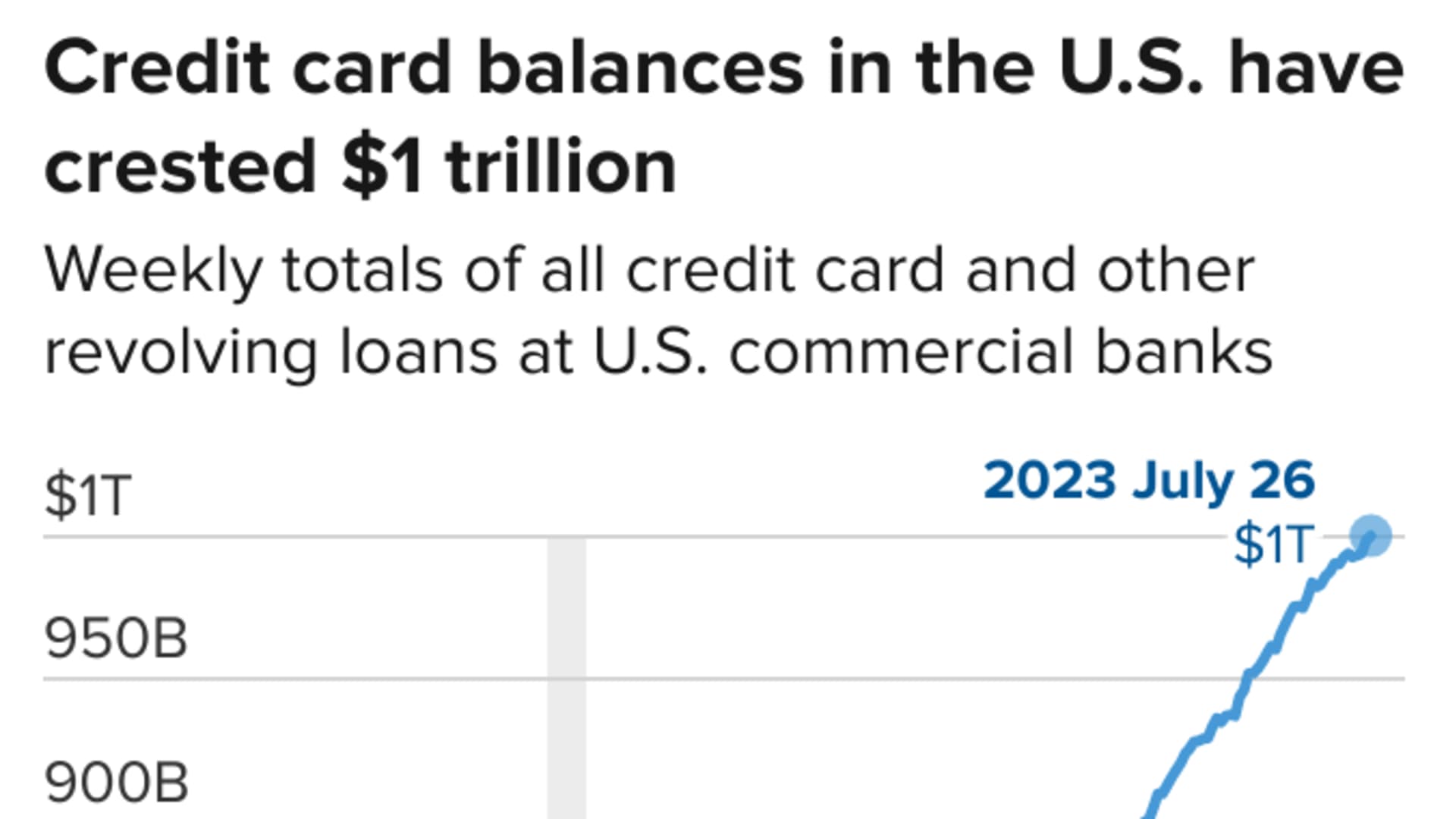
- Americans are steadily falling deeper into credit card debt.
- Of those carrying card balances, 60% have now been in debt for a year or more, according to a recent report.
- There are some tried-and-true payoff strategies that can help, experts say.
- Here are the best ways to jump-start debt repayment.
Credit cards are one of the most expensive ways to borrow money from month to month, and yet many Americans continue to take on ever-increasing amounts of this debt.
On the heels of another rate hike by the Federal Reserve, the average credit card rate is now more than 20% on average, an all-time high, making it even harder to dig out of debt.
Get Boston local news, weather forecasts, lifestyle and entertainment stories to your inbox. Sign up for NBC Boston’s newsletters.
While balances are higher, more cardholders are also carrying debt from month to month, according to a new Bankrate report.
More from Personal Finance:
Paying in cash helps shoppers 'forget' guilty pleasures
61% of Americans live paycheck to paycheck
How the Fed's quarter-point interest rate hike affects you
Now, 47% of borrowers carry over card balances each month, the report found. And of those who are carrying a balance, 60%, or roughly 54 million people, have been in debt for at least a year.
"The situation is noticeably worse than it was a few years ago," said Ted Rossman, senior industry analyst at Bankrate. "More people are carrying more debt and at very high interest rates."

How to tackle high-interest credit card debt
Money Report
1. Snag a 0% balance transfer credit card
"My top tip is to sign up for a 0% balance transfer card," Rossman said. "These allow you to avoid interest for up to 21 months, and that's a tremendous tailwind that can power your debt payoff journey."
Cards offering 12, 15 or even 21 months with no interest on transferred balances are one of the best weapons Americans have in the battle against credit card debt, added Matt Schulz, LendingTree's chief credit analyst.
To make the most of a balance transfer, aggressively pay down the balance during the introductory period. Otherwise, the remaining balance will have a new annual percentage rate applied to it, which is about 24%, on average, in line with the rates for new credit, according to Schulz.
Further, there can be limits on how much you can transfer and fees attached. Most cards have a one-time balance transfer fee, which is usually around 3% of the tab, but there can be an annual fee for the card, as well.
2. Pick a repayment strategy
There are two ways you could approach repayment: prioritize the highest-interest debt or pay off your debt from smallest to largest balance. Those strategies are known as the avalanche or snowball method, respectively. Using either can help consumers pay off debt as much as 100 months sooner, according to a separate analysis by LendingTree.
The avalanche method lists your debts from highest to lowest by interest rate. That way, you pay off the debts that rack up the most in interest first. The snowball method prioritizes your smallest debts first, regardless of interest rate, to help gain momentum as the debts are paid off.
With either strategy, you'll make the minimum payments each month on all your debts and put any extra cash toward accelerating repayment on one debt of your choice.
"People may tell you there's an absolute right answer as to which method is best," Schulz said. "They're wrong. There's not. It's heavily dependent on each individual's financial circumstances and even their own personal styles. And, ultimately, if you start with one method and don't like it, nothing says you can't switch strategies."






